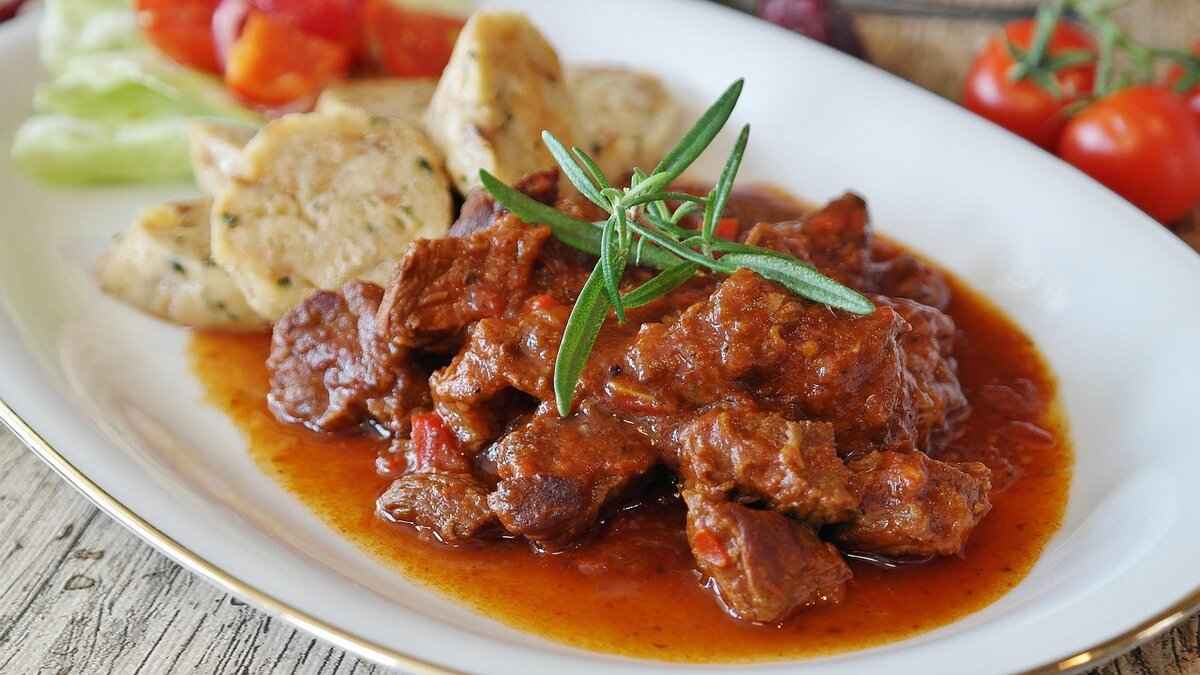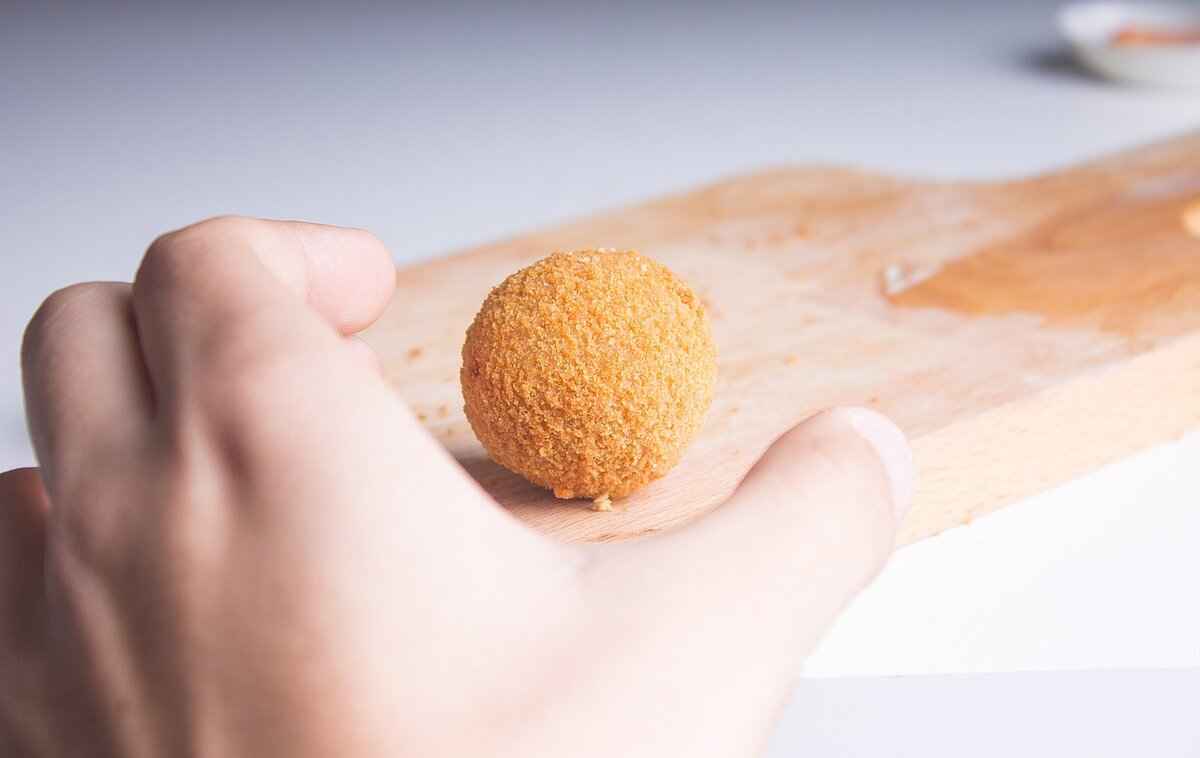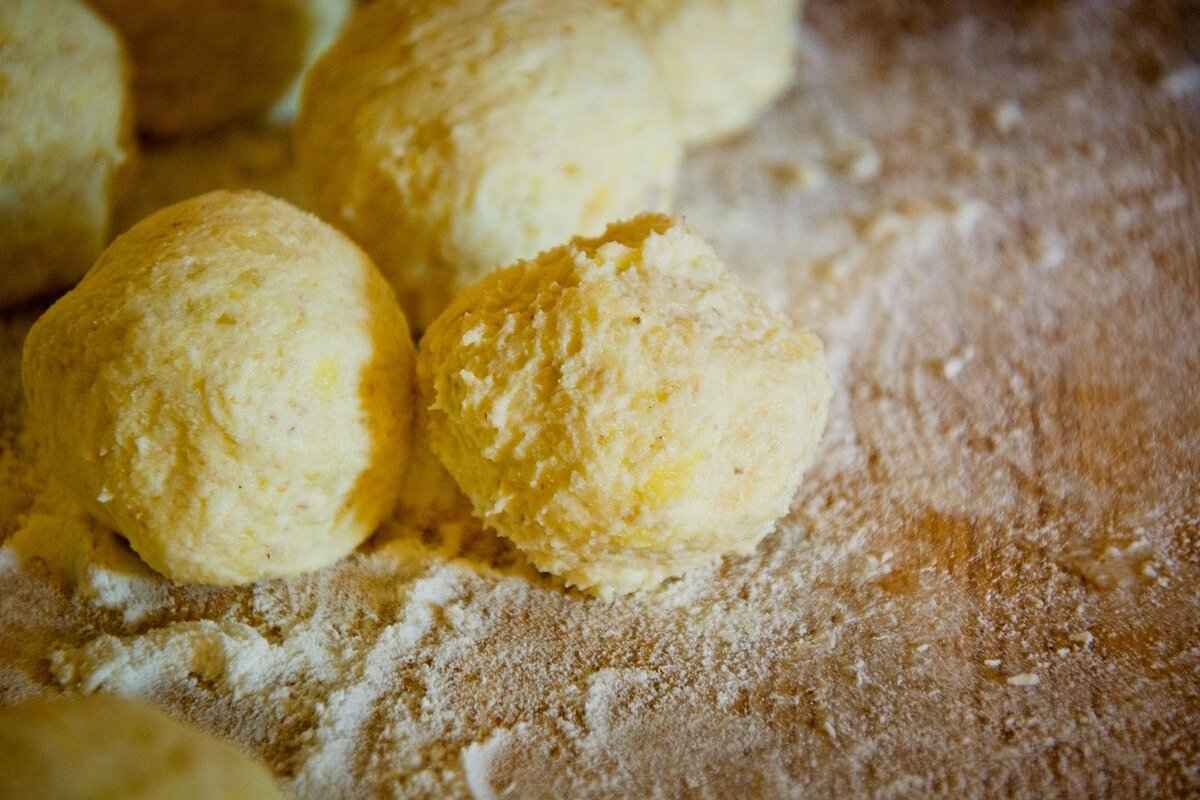Dumplings and longevity noodles are two iconic dishes that hold profound meaning during the Chinese New Year. These culinary delights not only tantalize the taste buds but also serve as powerful symbols of wealth, prosperity, and long life. Each year, families come together to prepare and enjoy these dishes, reinforcing their cultural significance and the values they represent.
Dumplings, or jiaozi, are more than just a delicious food item; they are a symbol of wealth and prosperity. Traditionally shaped like ancient Chinese gold or silver ingots, they represent the hope for financial success in the coming year. Families often gather to make dumplings together, fostering a sense of unity and togetherness. The act of wrapping the dumplings is seen as a way to seal in good fortune, making them a must-have during New Year celebrations.
Longevity noodles, known as chang shou mian, are another essential dish during the festive season. These long noodles symbolize a wish for a long and healthy life. Traditionally, they are served uncut, as cutting them is believed to shorten one’s lifespan. Eating these noodles during the New Year is a way for families to express their hopes for longevity and well-being in the year ahead.
To prepare authentic dumplings, it’s essential to start with the right ingredients. The basic dough requires just flour and water, but the fillings can vary widely. Popular choices include minced pork, shrimp, and a mix of vegetables. Mastering the folding technique is crucial, as it ensures the dumplings are sealed properly, preventing any filling from escaping during cooking. Dumplings can be boiled, steamed, or pan-fried, each method offering a unique texture and flavor.
- Flour
- Water
- Pork, shrimp, or vegetables for filling
When it comes to cooking dumplings, families often debate the best method. Boiling is the most common technique, resulting in a tender texture. Steaming, on the other hand, preserves the flavors and can create a slightly chewy exterior. Pan-frying offers a delightful crispy bottom, adding a different dimension to the dish. Each cooking method has its own appeal, allowing families to choose based on personal preference.
Cooking longevity noodles requires careful attention to ensure they reach the perfect texture. Start by selecting high-quality noodles, preferably those that are long and thin. Boil them until they are just tender, then drain and rinse under cold water to stop the cooking process. Pair the noodles with savory sauces and fresh vegetables for a delicious dish that embodies the spirit of the New Year.
The rituals surrounding dumplings and longevity noodles are rich and varied. Family gatherings are central to these celebrations, where sharing meals symbolizes unity and the importance of familial bonds. The act of preparing and consuming these dishes together fosters connections and strengthens relationships.
During the Chinese New Year, families come together to celebrate not just with food, but also with love and laughter. Sharing dumplings and longevity noodles signifies a collective hope for prosperity and long life, reinforcing the cultural importance of family ties.
Various rituals accompany the preparation and consumption of these dishes. For instance, it is common to make a wish while eating longevity noodles, a practice believed to bring good fortune throughout the year. Additionally, some families hide a coin in one of the dumplings, and the person who finds it is thought to have a prosperous year ahead.

Why Are Dumplings Important for Chinese New Year?
Dumplings, known as jiaozi, are a vital part of the Chinese New Year celebrations, embodying rich cultural significance and traditions. These delightful morsels are not just a delicious dish; they are steeped in symbolism, representing wealth and prosperity. Their unique shape resembles ancient Chinese gold or silver ingots, which further enhances their association with good fortune.
The importance of dumplings during the Chinese New Year goes beyond mere taste. Families gather to prepare and eat dumplings, making it a communal activity that strengthens bonds and fosters a sense of unity. This tradition of making dumplings together is often accompanied by laughter and storytelling, creating lasting memories.
Preparing dumplings involves several steps, each contributing to the final product’s taste and texture. The process begins with making the dough, which consists of flour and water. After kneading, the dough is rolled into thin circles, ready to be filled with a variety of mixtures, typically comprising ground meat, vegetables, and seasonings.
- Pork – A popular choice, often mixed with ginger and scallions.
- Shrimp – Provides a delicate taste and is frequently combined with vegetables.
- Vegetarian – Options like mushrooms, cabbage, and tofu cater to diverse dietary preferences.
Once filled, dumplings can be cooked in various ways, each yielding different textures and flavors. The most common methods include:
- Boiling – Produces a soft and tender dumpling.
- Steaming – Retains moisture and enhances the filling’s flavor.
- Pan-frying – Creates a crispy bottom while keeping the top soft.
The act of eating dumplings during the New Year is believed to bring good luck and prosperity for the year ahead. Many families even hide a coin within one of the dumplings, and the person who finds it is thought to have an especially lucky year.
As families gather around the table to enjoy dumplings, various rituals are observed. It is customary to make wishes while eating, with the belief that expressing hopes aloud will help manifest them in the coming year. Additionally, the act of sharing dumplings signifies unity and the importance of familial ties.
Dumplings are just one part of a larger tapestry of traditions that make up the Chinese New Year celebrations. They are often served alongside other symbolic dishes, such as longevity noodles, which represent long life. Together, these foods create a feast that embodies the hopes and dreams of families for a prosperous and harmonious year ahead.
In summary, dumplings are more than just a tasty treat; they are a powerful symbol of family unity, wealth, and good fortune during the Chinese New Year. Their preparation and consumption are steeped in tradition, making them an essential part of the festive celebrations.
jiaozi,
Dumplings and longevity noodles are quintessential dishes during the Chinese New Year, celebrated by millions around the world. These dishes are not just culinary delights; they are steeped in cultural significance, symbolizing prosperity, unity, and long life. This article explores the importance of jiaozi (dumplings) and chang shou mian (longevity noodles) during this festive season.
Dumplings, known as jiaozi, hold deep cultural significance during the Chinese New Year. They symbolize wealth and prosperity, making them a staple dish for family gatherings and celebrations. Traditionally, families gather to make dumplings together, reinforcing bonds and creating a sense of unity.
Longevity noodles, or chang shou mian, are another essential dish during the festivities. They represent long life and are traditionally served uncut to ensure a long and prosperous year ahead. The act of consuming these noodles is a ritual that embodies the hope for good fortune and health in the coming year.
Preparing authentic dumplings involves selecting the right ingredients, mastering the folding technique, and employing various cooking methods. Here’s a brief guide:
- Essential Ingredients: The key ingredients for making dumplings include flour, water, and a variety of fillings such as pork, shrimp, or vegetables, which can be customized to suit personal tastes.
- Cooking Methods: Dumplings can be boiled, steamed, or pan-fried. Each method offers a unique texture and flavor, allowing families to choose their preferred cooking style for the New Year feast.
Cooking longevity noodles involves selecting the right type of noodles and ensuring they are cooked to the perfect texture. This dish is often paired with flavorful sauces and vegetables, enhancing its taste and significance.
Cultural rituals surrounding dumplings and longevity noodles include family gatherings, sharing meals, and specific practices that enhance the significance of these dishes during the New Year celebrations.
Family gatherings are crucial during the Chinese New Year, where sharing dumplings and longevity noodles symbolizes unity, prosperity, and the importance of familial bonds in Chinese culture. The act of preparing and enjoying these dishes together strengthens relationships and creates lasting memories.
Various rituals and superstitions accompany the preparation and consumption of these dishes. For instance, making a wish while eating longevity noodles is believed to ensure good fortune throughout the year. Additionally, it is common to hide a coin inside a dumpling; the person who finds it is said to have good luck for the year ahead.
In summary, jiaozi and chang shou mian are more than just food; they are integral to the cultural fabric of the Chinese New Year. Their preparation and consumption foster family unity and convey wishes for prosperity and longevity. As families around the world come together to celebrate this festive occasion, these dishes remain a cherished tradition, embodying the hopes and dreams for the year to come.
hold deep cultural significance during the Chinese New Year. They symbolize wealth and prosperity, making them a staple dish for family gatherings and celebrations.
Dumplings and Longevity Noodles are integral to the Chinese New Year celebrations, embodying rich cultural significance and symbolism. These dishes are not only delicious but also represent wealth, prosperity, and long life, making them essential during this festive season.
Dumplings, known as jiaozi, hold deep cultural significance during the Chinese New Year. They symbolize wealth and prosperity, making them a staple dish for family gatherings and celebrations. Traditionally, families gather to make dumplings together, reinforcing familial bonds and sharing hopes for the coming year. The shape of dumplings resembles ancient Chinese gold ingots, further enhancing their association with wealth.
Longevity noodles, or chang shou mian, are another essential dish during the festivities. They represent long life and are traditionally served uncut to ensure a long and prosperous year ahead. The longer the noodles, the longer the life, which is why they are often the centerpiece of New Year feasts. Eating these noodles is a way to express wishes for health and longevity among family members.
Preparing authentic dumplings involves selecting the right ingredients, mastering the folding technique, and cooking methods. Key ingredients for making dumplings include flour, water, and a variety of fillings such as pork, shrimp, or vegetables. Each family has its unique twist on fillings, allowing for customization according to personal tastes.
Dumplings can be boiled, steamed, or pan-fried. Each method offers a unique texture and flavor, allowing families to choose their preferred cooking style for the New Year feast. Boiling results in a soft texture, while steaming preserves the flavors and nutrients. Pan-frying creates a delightful crispy exterior, appealing to many taste buds.
Cooking longevity noodles involves selecting the right type of noodles and ensuring they are cooked to the perfect texture. These noodles are often paired with flavorful sauces and vegetables, enhancing their taste. It is essential to avoid overcooking to maintain their characteristic chewiness, which symbolizes resilience and longevity.
Cultural rituals surrounding dumplings and longevity noodles include family gatherings, sharing meals, and specific practices that enhance the significance of these dishes during the New Year celebrations. Families often gather to prepare these dishes together, symbolizing unity and collaboration.
Family gatherings are crucial during the Chinese New Year, where sharing dumplings and longevity noodles symbolizes unity, prosperity, and the importance of familial bonds in Chinese culture. The act of sharing these dishes reinforces connections and celebrates the spirit of togetherness.
Various rituals and superstitions accompany the preparation and consumption of these dishes. For instance, making a wish while eating longevity noodles is believed to ensure good fortune throughout the year. Additionally, some families hide a coin inside a dumpling, and the person who finds it is said to have good luck in the coming year.
In conclusion, dumplings and longevity noodles are more than just food during the Chinese New Year; they are rich in symbolism and tradition. By understanding their cultural importance, families can deepen their connections and celebrate the New Year with meaningful rituals.
What Do Longevity Noodles Represent?
Longevity noodles, known as chang shou mian in Mandarin, are a cherished culinary tradition in Chinese culture, particularly during the auspicious time of the Chinese New Year. These long, uncut noodles symbolize long life and are an essential dish served during festive celebrations. Their significance extends beyond mere sustenance; they embody the hopes and wishes for health and longevity in the coming year.
The preparation and consumption of longevity noodles are steeped in rich symbolism. The length of the noodles represents the wish for a long life. Families often serve these noodles uncut, emphasizing the importance of maintaining their length throughout the cooking process. This culinary practice reflects the desire for a prosperous year ahead, filled with good fortune and health.
Preparing longevity noodles requires careful attention to detail. The noodles can be made from various types of flour, with wheat flour being the most common choice. When cooking, it’s crucial to avoid overcooking them, as this can lead to a mushy texture that detracts from the dish’s significance. Instead, they should remain slightly chewy, allowing for a satisfying bite.
- Ingredients: Common ingredients include flour, water, and sometimes egg. These basic components can be enhanced with various seasonings and sauces.
- Cooking Methods: Longevity noodles can be boiled, stir-fried, or served in broth. Each method offers a unique taste and texture, making them versatile for different palates.
To elevate the dish, longevity noodles are often paired with an array of ingredients that complement their flavor. Popular additions include:
- Vegetables: Ingredients such as bok choy, mushrooms, and carrots add color and nutrition.
- Proteins: Shrimp, chicken, or tofu can be included to create a more substantial meal.
- Sauces: Soy sauce, sesame oil, and garlic are common flavor enhancers that bring depth to the dish.
The act of consuming longevity noodles is often accompanied by specific cultural rituals. Families gather around the table, and it is customary to share wishes for health and longevity as the noodles are served. Some families even have a tradition of making a wish while slurping the noodles, believing that the act of eating them brings good fortune.
Additionally, the presentation of longevity noodles plays a significant role in their cultural importance. They are often served as a centerpiece during festive meals, symbolizing unity and familial bonds. The act of sharing these noodles among family members fosters a sense of togetherness, reinforcing the values of love and respect within the family unit.
In summary, longevity noodles are more than just a dish; they are a powerful symbol of hope and prosperity during the Chinese New Year. Their significance in promoting health and longevity makes them an indispensable part of the celebrations. As families come together to enjoy this traditional dish, they not only nourish their bodies but also strengthen their bonds and share their aspirations for the future.
chang shou mian,
During the Chinese New Year, certain dishes hold special significance, among which longevity noodles (known as chang shou mian) are particularly noteworthy. These noodles are not just a culinary delight; they embody the essence of long life and prosperity, making them a must-have for festive celebrations.
Longevity noodles are a traditional dish that represents long life. The length of the noodles signifies the wish for a long and healthy life, and they are typically served uncut during the New Year festivities to symbolize the continuity of life. In Chinese culture, the act of consuming these noodles is believed to bring good fortune and longevity to those who partake in them.
Preparing longevity noodles is both an art and a culinary tradition. The key to making these noodles lies in the choice of ingredients and cooking methods. Here’s a simple guide:
- Ingredients: The essential ingredients include flour, water, and a pinch of salt. For added flavor, you may incorporate eggs or other seasonings.
- Cooking Method: The noodles can be boiled until they reach the desired texture. It’s important to avoid overcooking them to maintain their chewy consistency.
In addition to their delicious taste, longevity noodles are steeped in cultural rituals that enhance their significance during the New Year. Families often gather to share these noodles, emphasizing unity and togetherness. The act of eating the noodles is accompanied by various superstitions:
- Making a Wish: It is customary to make a wish while consuming the noodles, hoping for good fortune throughout the year.
- Family Unity: Sharing longevity noodles with family members symbolizes the importance of familial bonds and mutual support.
Longevity noodles play a crucial role in the festive feast, often served alongside other traditional dishes. They are typically presented in a large bowl, allowing family members to serve themselves, which fosters a sense of community and sharing.
While the classic preparation of longevity noodles is simple, there are numerous variations that can enhance the dish:
- Vegetable Additions: Incorporating seasonal vegetables such as bok choy, carrots, or mushrooms adds flavor and nutrition.
- Flavorful Sauces: Pairing the noodles with savory sauces like soy sauce or oyster sauce can elevate the dish.
In conclusion, longevity noodles are more than just a meal; they are a symbol of hope, prosperity, and family unity during the Chinese New Year. By understanding their significance and incorporating them into your celebrations, you can honor this rich cultural tradition.
are another essential dish during the festivities. They represent long life and are traditionally served uncut to ensure a long and prosperous year ahead.
During the Chinese New Year, two dishes hold a special place in the hearts and homes of families: dumplings and longevity noodles. These dishes are not just culinary delights; they are steeped in cultural significance and tradition, symbolizing prosperity and long life, respectively. This article explores the importance of these dishes, how they are prepared, and the rituals surrounding their consumption during the festive season.
Dumplings, known as jiaozi, are a staple during the Chinese New Year celebrations. They are often shaped like ancient Chinese gold or silver ingots, symbolizing wealth and prosperity. Families gather to make dumplings together, reinforcing family bonds and traditions. The act of making and sharing dumplings is believed to usher in good fortune for the coming year.
Longevity noodles, or chang shou mian, are another essential dish during the festivities. They represent long life and are traditionally served uncut to ensure a long and prosperous year ahead. The longer the noodles, the greater the blessings of longevity. Eating these noodles during the New Year is a way to honor ancestors and wish for health and happiness.
Preparing authentic dumplings involves a few key steps:
- Selecting the Right Ingredients: Common fillings include ground pork, shrimp, and vegetables.
- Mastering the Folding Technique: Proper folding ensures the dumplings remain sealed during cooking.
- Cooking Methods: Dumplings can be boiled, steamed, or pan-fried, each offering a unique taste.
The key ingredients for making dumplings include:
- Flour: Used to make the dough.
- Water: Helps bind the dough.
- Fillings: Such as pork, shrimp, or vegetables, which can be customized to suit personal tastes.
Dumplings can be prepared in various ways:
- Boiling: Creates a soft, tender texture.
- Steaming: Retains moisture and flavor.
- Pan-frying: Adds a crispy exterior.
Cooking longevity noodles involves:
- Selecting the Right Type: Thin, long noodles are preferred.
- Perfect Cooking: Ensure they are cooked to the right texture without overcooking.
These noodles are often paired with flavorful sauces and vegetables, enhancing their taste and significance.
Cultural rituals surrounding dumplings and longevity noodles include:
- Family Gatherings: Sharing these dishes symbolizes unity and prosperity.
- Meal Sharing: Eating together fosters familial bonds and traditions.
Various rituals accompany the preparation and consumption of these dishes. For example, making a wish while eating longevity noodles is a common practice, believed to ensure good fortune throughout the year. Families often prepare these dishes with care and intention, reflecting their hopes for the future.
How to Prepare Authentic Dumplings?
Preparing authentic dumplings is an art that combines the right ingredients, skillful techniques, and traditional cooking methods. Dumplings, or jiaozi, are a cherished dish during the Chinese New Year, symbolizing wealth and prosperity. To ensure that your dumplings are not just tasty but also reflect the rich cultural heritage, follow these detailed steps:
Step 1: Selecting the Right Ingredients
The foundation of delicious dumplings lies in the ingredients. Here are the essentials:
- Dough: Use high-quality all-purpose flour and water to create a smooth and elastic dough. Aim for a ratio of 2:1 flour to water.
- Fillings: Common fillings include minced pork, shrimp, or a mix of vegetables. Incorporate seasonings like ginger, garlic, soy sauce, and sesame oil for enhanced flavor.
- Herbs: Fresh herbs such as cilantro or green onions can add a refreshing twist to your filling.
Step 2: Mastering the Folding Technique
The folding technique is crucial for achieving beautifully shaped dumplings. Here’s how to do it:
1. Roll the dough into small circles, about 3 inches in diameter.2. Place a spoonful of filling in the center of each circle.3. Fold the dough over the filling, pinching the edges to seal tightly. 4. For decorative pleats, start from one end and create small folds as you pinch along the edge.
Step 3: Choosing Cooking Methods
Once your dumplings are shaped, the next step is cooking. You can choose from several methods:
- Boiling: Place dumplings in boiling water and cook for about 5-7 minutes until they float.
- Steaming: Arrange dumplings in a steamer basket lined with parchment paper and steam for 10-12 minutes.
- Pan-frying: Heat oil in a skillet, add dumplings, and fry until golden brown. Add a splash of water and cover to steam for a few minutes.
Step 4: Serving and Enjoying
Serve your dumplings hot with a dipping sauce made of soy sauce, vinegar, and chili oil. This enhances the flavor and adds a delightful kick. Dumplings are best enjoyed with family and friends, making them a perfect addition to your New Year celebrations.
Additional Tips for Perfect Dumplings
- Keep the dough covered while working to prevent it from drying out.
- Experiment with fillings to cater to different tastes and dietary preferences.
- Practice your folding technique; the more you make, the better you will become!
By following these steps, you can create authentic dumplings that not only taste amazing but also bring a sense of tradition and joy to your celebrations. Enjoy the process, and may your dumplings be a symbol of prosperity and happiness in the New Year!

Essential Ingredients for Dumplings
Dumplings are a beloved dish in many cultures, but they hold a particularly special place in Chinese cuisine, especially during the festive season of the Chinese New Year. The preparation of dumplings is not just about filling and folding; it is an art form that requires attention to detail, tradition, and a touch of creativity. Understanding the essential ingredients is the first step in creating these delightful morsels that symbolize wealth and prosperity.
The foundation of any dumpling is simple yet versatile. The key ingredients for making dumplings typically include:
- Flour: All-purpose flour is the most common choice, providing the necessary gluten structure for a chewy texture. Some recipes may call for specialized flours to achieve different textures.
- Water: The amount of water used can vary depending on the type of flour and desired dough consistency. It is crucial for hydrating the flour and binding the ingredients together.
- Fillings: This is where the creativity shines! Dumpling fillings can range from traditional options like pork and shrimp to vegetarian choices such as cabbage, mushrooms, and tofu. Customizing fillings to suit personal tastes or dietary restrictions is not only common but encouraged.
When selecting fillings, consider balancing flavors and textures. For instance, combining savory meats with crunchy vegetables creates a delightful contrast. Additionally, incorporating herbs and spices can elevate the taste profile. Popular combinations include:
- Pork and Chives: A classic filling that is both flavorful and aromatic.
- Shrimp and Scallions: This combination offers a fresh and slightly sweet flavor.
- Vegetables and Tofu: Perfect for a vegetarian option, this filling can be seasoned with soy sauce and sesame oil for added depth.
Creating the perfect dumpling dough is crucial for achieving the right texture. Here are some essential techniques:
- Kneading: Once the flour and water are combined, kneading the dough helps develop gluten, resulting in a chewy texture.
- Resting: Allowing the dough to rest for at least 30 minutes helps relax the gluten, making it easier to roll out.
- Rolling: The dough should be rolled out thinly to ensure even cooking and a pleasant bite.
The cooking method chosen can significantly impact the flavor and texture of dumplings. Common techniques include:
- Boiling: This method produces a soft and tender dumpling, perfect for soups or serving with dipping sauces.
- Steaming: Steamed dumplings retain moisture and flavor, making them a healthier option.
- Pan-frying: This technique creates a crispy bottom while keeping the filling juicy, known as potstickers.
In conclusion, the essential ingredients for dumplings are simple but allow for endless customization. By understanding the importance of each component and the techniques involved, anyone can master the art of dumpling making. Whether for festive celebrations or family dinners, these delightful treats are sure to bring joy and prosperity to the table.
Cooking Methods: Boiling vs. Steaming
Dumplings are a beloved dish enjoyed by many, especially during the festive season of Chinese New Year. Among the various methods of cooking dumplings, boiling, steaming, and pan-frying stand out, each offering a unique texture and flavor profile that caters to different preferences. Understanding these methods can enhance your culinary experience and allow you to enjoy dumplings in various delightful ways.
Boiling dumplings involves immersing them in water until they float, which typically takes about 5 to 7 minutes. This method results in a soft and tender texture, making the dumplings easy to chew. Boiling is often preferred for those who enjoy a more traditional approach, as it allows the flavors of the filling to meld beautifully with the dough.
On the other hand, steaming dumplings is a technique that uses steam to cook them, usually in a bamboo steamer or a metal steaming basket. This method retains more moisture in the dumplings, resulting in a juicy and flavorful bite. Steamed dumplings are often considered healthier, as they require no additional oil and maintain the integrity of the ingredients used in the filling.
Pan-frying, also known as potsticker style, offers a delightful contrast to the other methods. Dumplings are first fried in a small amount of oil until the bottoms are golden and crispy, then water is added to the pan and covered to allow them to steam. This dual cooking method results in a crispy exterior and a soft interior, appealing to those who enjoy a variety of textures in their meals.
Furthermore, pan-fried dumplings often have a rich, savory flavor, enhanced by the caramelization that occurs during frying. This method is particularly popular among families who appreciate the added crunch and complexity in taste.
Choosing the right cooking method for dumplings ultimately depends on personal preference and dietary considerations. If you’re looking for a quick and traditional approach, boiling might be your best bet. If you prefer a healthier option that retains moisture, steaming is ideal. For those who love texture and flavor, pan-frying is the way to go.
- Boiled Dumplings: Soft, tender, and traditional.
- Steamed Dumplings: Juicy, flavorful, and healthy.
- Pan-Fried Dumplings: Crispy, savory, and texturally diverse.
Regardless of the method you choose, there are a few tips to ensure your dumplings turn out perfectly:
- Do Not Overcrowd: When boiling or steaming, avoid overcrowding the pot or steamer to ensure even cooking.
- Check for Doneness: Boiled dumplings are done when they float, while steamed dumplings should be translucent and firm to the touch.
- Experiment with Fillings: Try different fillings to find your favorite combination!
In summary, each cooking method for dumplings brings its own unique benefits, allowing families to enjoy this traditional dish in various forms during the Chinese New Year celebrations. Whether you prefer the softness of boiled dumplings, the juiciness of steamed ones, or the crunchiness of pan-fried varieties, there is a cooking style to suit every palate. Explore these methods to discover the delightful world of dumplings and make your New Year feast truly special!
How to Cook Longevity Noodles Perfectly?
Cooking longevity noodles is an art that requires attention to detail, from selecting the right type of noodles to achieving the perfect texture. These noodles, known as chang shou mian, are not only a delicious dish but also a symbol of long life and prosperity, especially during the Chinese New Year celebrations. In this guide, we will explore how to cook longevity noodles perfectly, ensuring they are a highlight of your festive meal.
The first step in cooking longevity noodles is selecting the right type. Traditionally, these noodles are long, thin, and made from wheat flour. Look for fresh noodles at your local Asian market, as they tend to have a better texture and flavor compared to dried ones. If fresh noodles are unavailable, opt for high-quality dried noodles, ensuring they are labeled as suitable for stir-frying or soups.
Before cooking, it is essential to prepare the noodles correctly. If using dried noodles, follow the package instructions for soaking or boiling. Typically, you should:
- Bring a large pot of water to a rolling boil.
- Add a pinch of salt to enhance the flavor.
- Add the noodles and cook until they are just tender, usually about 4-5 minutes.
- Drain the noodles and rinse them under cold water to stop the cooking process.
To achieve the perfect texture, it is crucial to avoid overcooking the noodles. They should be al dente, meaning they should have a slight bite when you chew them. This texture not only enhances the eating experience but also symbolizes the idea of longevity—just as the noodles are long, so too should life be.
Longevity noodles are often served with a variety of sauces and vegetables that complement their flavor. Here are some popular options:
- Soy Sauce: A classic choice that adds depth and umami.
- Oyster Sauce: For a richer flavor profile.
- Sesame Oil: A drizzle of sesame oil adds a nutty aroma.
Incorporate vegetables such as bok choy, carrots, and shiitake mushrooms for added nutrition and color. Stir-fry the vegetables briefly before adding the cooked noodles and sauce, tossing everything together until well combined.
There are several cooking methods to prepare longevity noodles, each offering a unique flavor and texture:
- Stir-frying: This method allows for a quick cooking time, ensuring the noodles remain firm and flavorful.
- Soup: Serve the noodles in a broth with vegetables and proteins for a comforting dish.
- Cold Noodle Salad: After cooking, rinse the noodles and toss them with a dressing for a refreshing dish.
When serving longevity noodles, presentation matters. Consider garnishing with scallions or sesame seeds for a visual appeal. Traditionally, the noodles should remain uncut, as cutting them is believed to symbolize a shortened life. Encourage diners to make a wish for the coming year as they enjoy their noodles, enhancing the cultural significance of the dish.
By following these guidelines, you can ensure that your longevity noodles are cooked to perfection, embodying the essence of long life and prosperity during your celebrations.
What Are the Cultural Rituals Surrounding These Dishes?
Dumplings and longevity noodles are more than just delicious dishes; they are steeped in rich cultural rituals that enhance their significance during the Chinese New Year celebrations. These culinary traditions not only bring families together but also symbolize the core values of unity, prosperity, and longevity.
During the Chinese New Year, the preparation and consumption of dumplings and longevity noodles are accompanied by various cultural rituals. These rituals serve to deepen the meaning of these dishes and create lasting memories for families.
Family gatherings play a pivotal role in the New Year celebrations. Sharing meals is a profound expression of love and togetherness. When families come together to prepare and enjoy dumplings and longevity noodles, they engage in a time-honored tradition that strengthens familial bonds. The act of making dumplings, often a collaborative effort, allows family members to share stories, laughter, and hopes for the coming year.
In addition to the joy of sharing meals, various rituals and superstitions surround these dishes. For instance, while eating longevity noodles, it is customary to make a wish for good fortune and health. The uncut nature of the noodles symbolizes a long life, and slurping them is not only acceptable but encouraged, as it signifies enthusiasm for life and prosperity.
The preparation of dumplings often involves specific rituals that enhance their significance. Families may gather on New Year’s Eve to make dumplings, ensuring that each one is filled with a wish for wealth and happiness. Some even hide a coin inside one dumpling, and the person who finds it is believed to have good luck for the year ahead. This playful tradition adds an element of excitement and anticipation to the meal.
The ingredients used in dumplings and longevity noodles also hold symbolic meanings. For example, pork is often included in dumplings as it represents wealth, while vegetables symbolize fertility and growth. In longevity noodles, the choice of ingredients, such as mushrooms or greens, is often linked to health and prosperity. Families take care to select fresh and high-quality ingredients to ensure a bountiful year.
Beyond family gatherings, the rituals surrounding these dishes often extend to the community. Neighborhoods may organize dumpling-making events, fostering a sense of community spirit. These gatherings not only celebrate the culinary arts but also serve as a reminder of the importance of togetherness in Chinese culture.
The atmosphere during these celebrations is vibrant and festive. Homes are often adorned with red decorations, symbolizing good luck and happiness. The act of preparing and consuming dumplings and longevity noodles is complemented by the sounds of laughter, music, and the clinking of chopsticks, creating an ambiance that is both joyful and meaningful.
In conclusion, the cultural rituals surrounding dumplings and longevity noodles during the Chinese New Year are rich and varied. They embody the essence of family, community, and tradition, making these dishes not just food but a vital part of the celebration. As families gather to share these meals, they reinforce their connections and express their hopes for the future. The significance of these rituals continues to be celebrated, ensuring that the traditions surrounding dumplings and longevity noodles remain alive for generations to come.
Family Gatherings and Meal Sharing
Family gatherings during the Chinese New Year are not just occasions for celebration but also serve as a vital link that strengthens familial bonds. These gatherings are marked by the sharing of traditional dishes, most notably dumplings and longevity noodles, which hold profound cultural significance. The act of coming together to share meals symbolizes unity and prosperity, embodying the essence of familial connections in Chinese culture.
Family gatherings reflect the importance of relationships and the collective hope for a prosperous year ahead. During the Chinese New Year, families often travel long distances to reunite, emphasizing the value placed on family ties. This time of year is not only about sharing food but also about sharing stories, laughter, and memories, reinforcing the importance of family in Chinese society.
Dumplings, or jiaozi, are a staple during these gatherings, symbolizing wealth and the hope for a prosperous year. The preparation of dumplings often involves the entire family, from mixing the dough to folding the dumplings. This collaborative effort strengthens familial bonds and creates a sense of togetherness.
Similarly, longevity noodles (or chang shou mian) are traditionally served during family meals to symbolize a long life. The uncut noodles represent the wish for a long and prosperous future, and families often make a point to serve them in a way that encourages sharing and connection.
Rituals surrounding family meals during the New Year often include specific practices that enhance the experience. For example, many families have the tradition of making a wish while eating longevity noodles, which is believed to bring good fortune for the coming year. Additionally, the act of sharing dumplings is often accompanied by exchanging blessings and well-wishes among family members.
The cultural significance of family gatherings during the Chinese New Year is deeply rooted in tradition. Families often prepare a feast that includes dumplings and longevity noodles, along with other symbolic dishes. These meals are not just about the food; they are a way to honor ancestors and express gratitude for the past year while looking forward to the future.
During these gatherings, it is common for families to engage in games and activities that foster interaction and joy. These moments create lasting memories and solidify the family’s identity, making the New Year celebration a cherished event.
Food plays a central role in Chinese culture, especially during the New Year celebrations. The act of cooking and sharing meals is a way to express love and care for family members. Every dish served carries a meaning, and the preparation often involves various family members, making it a collective effort.
In conclusion, family gatherings during the Chinese New Year are essential for nurturing relationships and promoting unity. The sharing of dumplings and longevity noodles not only symbolizes wealth and long life but also reinforces the importance of family bonds. Through these traditions, families come together to celebrate their heritage, share their hopes for the future, and strengthen their connections.
Rituals and Superstitions
The Chinese New Year is a time filled with rich traditions, vibrant celebrations, and deep-rooted cultural practices. Among the most cherished customs are the rituals and superstitions associated with the preparation and consumption of traditional dishes like dumplings and longevity noodles. These practices not only enhance the festive spirit but also serve to reinforce family bonds and cultural heritage.
During the Chinese New Year, families engage in various rituals that elevate the significance of their meals. For instance, while preparing dumplings, families often gather together to fold the dumplings, symbolizing unity and cooperation. This act is not merely about making food; it represents the collective effort to bring good fortune into the household for the coming year.
Superstitions play a vital role in how meals are prepared and enjoyed. One popular belief is that the number of dumplings made should be even, as odd numbers are associated with funerals. Additionally, it is common to hide a coin within one of the dumplings; the person who finds it is thought to receive good luck and prosperity in the year ahead.
Longevity noodles, or chang shou mian, are a staple during the New Year, representing long life and good health. A unique ritual associated with these noodles is the practice of making a wish while consuming them. As one slurps the noodles, it is believed that the act of wishing ensures the fulfillment of that desire. This ritual highlights the importance of hope and aspiration during the New Year festivities.
Meal sharing is a fundamental aspect of the New Year celebrations. Families come together to enjoy these dishes, reinforcing the idea of togetherness and mutual support. The act of sharing dumplings and longevity noodles is symbolic of sharing wealth and happiness, which is a core value in Chinese culture. It is a time for families to reflect on their blessings and express gratitude for one another.
The combination of rituals and superstitions surrounding dumplings and longevity noodles not only enriches the dining experience but also deepens the cultural significance of the New Year celebrations. Each bite of these traditional dishes is imbued with meaning, connecting individuals to their heritage and to each other.
- Cleaning the House: Before the New Year, families clean their homes to sweep away any bad luck from the previous year, making space for incoming good fortune.
- Wearing New Clothes: It is customary to wear new clothes to symbolize a fresh start and new beginnings.
- Offering Food to Ancestors: Families often prepare dishes to honor their ancestors, showing respect and maintaining connections with their heritage.
In conclusion, the rituals and superstitions surrounding dumplings and longevity noodles during the Chinese New Year serve as a profound reminder of the values of family, prosperity, and hope. Engaging in these practices not only enriches the festive atmosphere but also fosters a sense of belonging and cultural continuity.
Frequently Asked Questions
- Why are dumplings considered a symbol of wealth?
Dumplings, or jiaozi, are shaped like ancient Chinese gold ingots, symbolizing wealth and prosperity. Eating them during the New Year is believed to bring good fortune for the year ahead.
- What makes longevity noodles special?
Longevity noodles, known as chang shou mian, represent long life and are traditionally served uncut. The longer the noodle, the longer the life is believed to be, making it a staple for New Year’s celebrations.
- How do I ensure my dumplings are authentic?
To prepare authentic dumplings, focus on using fresh ingredients, mastering the folding technique, and choosing the right cooking method—whether boiling, steaming, or pan-frying—to achieve that perfect taste.
- What rituals accompany the eating of these dishes?
During Chinese New Year, families gather to share dumplings and longevity noodles. It’s a time for unity, and many believe making a wish while eating longevity noodles brings good luck for the year.
- Can I customize the fillings in dumplings?
Absolutely! Dumplings can be filled with a variety of ingredients, such as pork, shrimp, or vegetables, allowing you to tailor them to your personal taste and dietary preferences.














